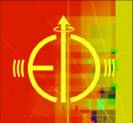The Electron-Ion Collider Collaboration has been formed for the following purposes and goals:
-
to develop the most compelling science case for a high-luminosity,
high-energy, electron-ion collider (EIC) independent of where
it may be sited;
-
to work with accelerator physicists, especially at BNL and JLab, to
develop the optimal EIC accelerator design; and
-
to design and realize through an R&D program the most optimal suite
of detectors for the EIC.
The EICC membership is open to any one who will work on achieving the
goals of the EICC. Any physicists interested in joining should contact Abhay Deshpande at abhay@bnl.gov or Richard Milner at milner@mit.edu.
The EIC Collaboration is governed by an EICC Steering Committee,
broadly representative of the collaborating institutes with two co-chairs
who will act as contact persons/spokespersons of the collaboration.
The purpose of the Steering Committee is:
-
To oversee the coordination of the three central activities of the EICC
-
To work with all parties towards timely realization of EIC
-
To ensure that the Collaboration is appropriately represented at all
meetings, conferences, and relevant discussions.
The Steering Committee is appointed by the EIC Collaboration, and will
be renewed ~annually. The present members of the Steering Committee are:
- Antje Bruell, Jlab
- Abhay Deshpande, Stony Brook, RBRC (Co-Chair/Spokesperson)
- Rolf Ent, JLab
- Charles Hyde, ODU/UBP, France
- Peter Jacobs, LBL
- Richard Milner, MIT (Co-Chair/Spokesperson)
- Thomas Ulrich, BNL
- Raju Venugopalan, BNL
- Werner Vogelsang, BNL
The members of the International Advisory Committee are:
- Jochen Bartels (DESY)
- Allen Caldwell (MPI, Munich)
- Albert De Roeck (CERN)
- Walter Henning (ANL, Chair)
- Dave Hertzog (UIUC)
- Xiangdong Ji (U. Maryland)
- Robert Klanner (U. Hamburg)
- Alfred Mueller (Columbia U.)
- Katsunobu Oide (KEK)
- Naohito Saito (KEK,J-PARC)
- Uli Wienands (SLAC)
The activities of the Collaboration are divided into several working groups.
The convenors of the various working groups are:
- ep Physics
- Antje Bruell, JLab
- Ernst Sichtermann, LBL
- Werner Vogelsang, BNL
- Christian Weiss, JLab
- eA Physics
- Vadim Guzey, JLab
- Dave Morrison, BNL
- Thomas Ullrich, BNL
- Raju Venugopalan, BNL
- Detector
- Elke Aschenauer, JLab
- Edward Kinney, U. Colorado
- Bernd Surrow, MIT
- Electron Beam Polarimetry
- Sasha Bazilevsky, BNL
- Wolfgang Lorenzon, U. Michigan
Two collaboration meetings are held per year.
Convenors organise working group meetings as necessary.
Special topical meetings are organised by the Steering Committee and
the working group convenors.
Mailing lists have been
created to facilitate communication within the Collaboration and working
groups.
 Electron-Ion Collider Collaboration
Electron-Ion Collider Collaboration 